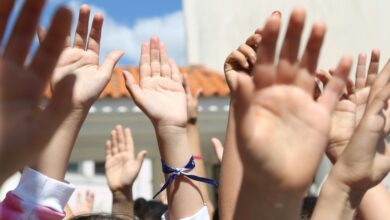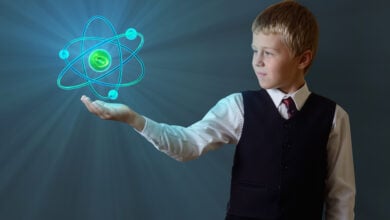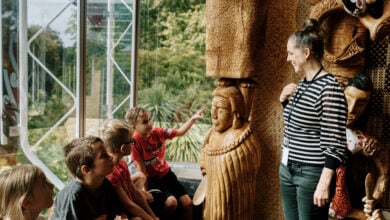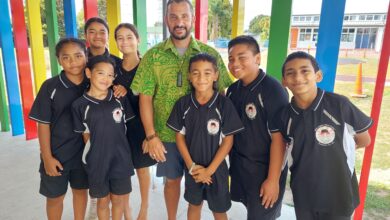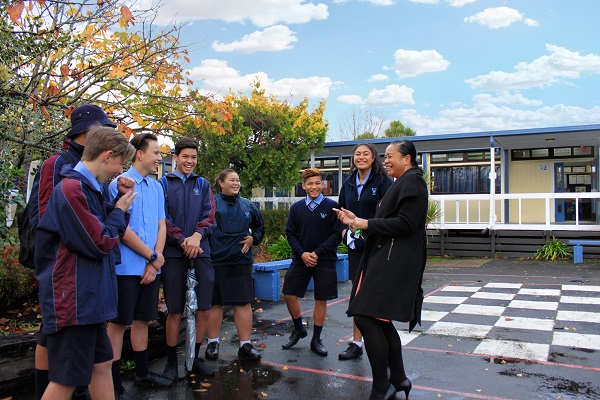
West Auckland’s Waitakere College is celebrating a dramatic rise in student achievement, especially for Māori and Pasifika. Principal Mark Shanahan tells the school’s story from its lowest point in 2013 to today’s high.
Today, in mid-2017, Waitakere College celebrates being co-winner of the Prime Minister’s Education Excellence Award for Teaching and Learning. This award, Atatū, recognises a dramatic rise in achievement during the past four years for all our students and especially for Māori and Pasifika, through powerful relationships between students, teachers and whānau, shared accountability and a responsive curriculum which offers many aspirational pathways to success.
In January 2013, our Waitakere College senior leadership team faced our greatest challenge when our NCEA results fell drastically following the NCEA standards review. This was most extreme for Māori and Pasifika students, with only 30.3 per cent of year 11 Māori and 49.3 per cent of Pasifika achieving NCEA level one.
We recognised the need to respond to this situation with urgency and a relentless focus on the goal of accelerating Māori and Pasifika student achievement. This involved taking a fresh look at many aspects of school culture and we could not afford to wait years for this to happen. We needed to work hard to identify and embed good practice, to reduce variability and to change what needed to be changed.
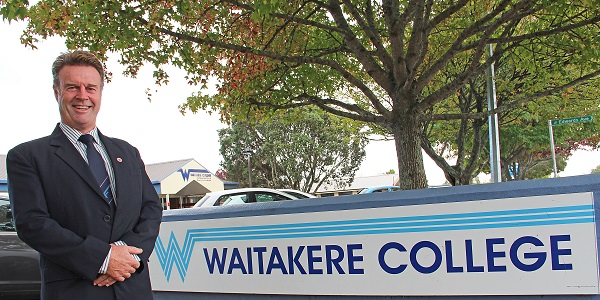
This crisis led to the development by the senior leadership team of the 2013 NCEA Action Plan, which was in place from the beginning of the year. We understood that this must be done in a way which brought teachers and middle leaders on board with the focus on analysis, problem solving and moving forward rather than avoidance or blame. Our saying of the time was, “It can’t be blame or shame, but it can’t be the same.”
Powerful relationships for learning
Underpinning all the changes we have made is our ‘three pillars’ mantra – which emphasises that our community is strong when all three (students, teachers and parents/whanau) work together. These relationships are powerful because they are underpinned by high expectations for all our students and focused on learning. This is reinforced by the work we have done over the past four years to more fully embed restorative practices across the school.
Māori language and tikanga is now visible and accepted as part of the school’s culture, with increasing evidence that Māori students take pride in their success and in identifying as Māori. The 2015 opening of our long-awaited whare wānanga, Te Waipuna o te Matauranga has contributed to a significant growth in trust in the college from Māori students, staff and whānau. Pasifika students also demonstrate a strong sense of pride in their identities and are well supported by a range of activities including regular fono and our Samoan national day celebration.
We have also made incremental improvements to our systems to support equity and work actively to mitigate hardship for students from low income families and ensure that hardship is not a barrier to achievement.
Increased teacher ownership and sense of accountability for achievement of our students, particularly Māori and Pasifika
The most important change was to ensure that every teacher felt truly accountable for the achievement of our students, particularly Māori and Pasifika. They had to recognise that Māori and Pasifika make up half our student population and that their success is paramount if we are to raise student achievement overall.
Many of the ingredients for success were already in place but needed to be fine-tuned or more consistent across the entire staff.
Culturally responsive pedagogies
Most staff had taken part in the Te Kotahitanga programme, understood how to build positive relationships and work effectively with Māori students. However, these practices were not consistent across all teachers and classrooms.
Today, the programme (renamed as Poutama) is fully embedded into the culture of the college, funded and supported by the Board of Trustees. Every teacher has been part of the Poutama programme, understands what is expected of them and almost without exception is committed to doing their best to build positive relationships with all their students and teach in a culturally responsive way.
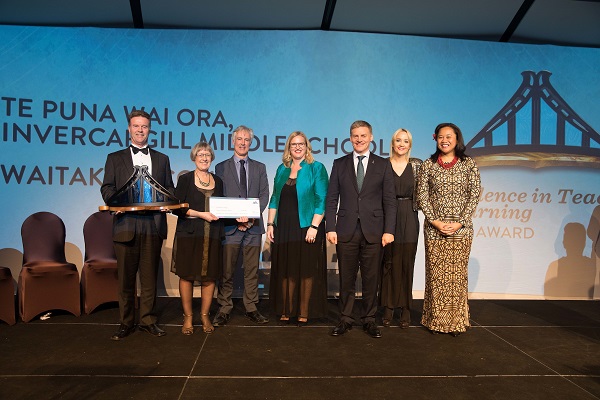
Target student focus for every teacher
In 2013, we moved the focus for teaching as inquiry to year 11, where teachers found it easier to come up with more measurable evidence of progress for their three Māori and one Pasifika target students. Talk of target student students and ways to accelerate their progress became a normal part of staffroom and department conversation.
Academic tracking, forecasting and mentoring
In 2013, forecasting occurred more frequently and with more timely responses from teachers, so that staff working with students had the most up-to-date information about a student’s progress. This has been refined and embedded into our systems, with tracking and forecasting now in place at years 11,12 and 13.
Goal setting and extended tutor class times were put in place to share the updated information from forecasts and get greater student buy in.
Family conferences and CSI
Family conferences in early term two were informed by the early forecasts and helped give students ownership of their own goals for achievement as well as building positive relationships with whānau. We also introduced CSI – (course selection interviews) – a term three family conference for every year 11 student to ensure that their year 12 course offered positive career pathways.
Mentoring for identified target students
In 2013, we revamped our mentoring system with a larger group of staff each voluntarily taking on two to four Māori target students (Te Haerenga – the Journey) from the ‘middle’ group where we hoped to make the greatest difference. A separate group of mentors (PAC men and PAC women) worked with Pasifika students.
By 2014, a third group of target students was added – ‘The World’, with students of any other ethnicity where mentoring was likely to make a significant difference. Photos of target students are displayed on staffroom walls so that all their teachers can support them and share information. Students and parents now recognise that students become ‘targets’ because we believe they can succeed.
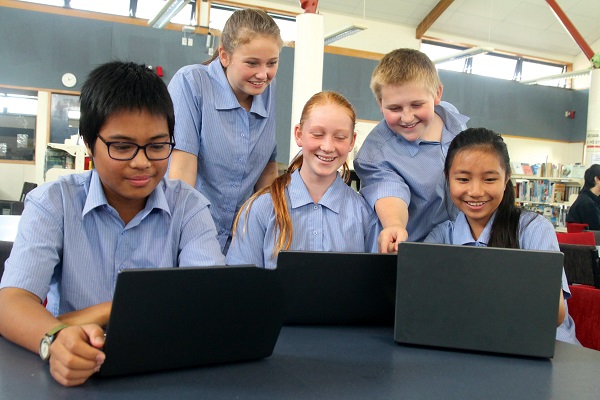 Exam catch-up workshops, holiday workshops, tutorials, summer school
Exam catch-up workshops, holiday workshops, tutorials, summer school
In 2013, some of the success was achieved through running credit-focused supplementary initiatives such as summer school, held during the early days of NCEA externals. However, since then the focus has been on ensuring that students achieve their results through achievement in authentic courses provided during the year. Additional support is still provided where it is needed, through tutorials and holiday programmes, but it is no longer the ambulance at the bottom of the cliff.
Dedicated staffing for academic tracking, mentoring and monitoring
Incremental changes have been made in recent years to strengthen the leadership of these initiatives, which are now overseen by our new assistant principal: student learning and achievement, working closely with a deputy principal and two COL Within Schools teachers.
A responsive curriculum – shaping the mahi to suit the rangatahi
Responsive course design to meet the needs of our students
One of the fundamental problems identified from our analysis of 2012 results was course design in response to the NCEA standards review. This required early and close analysis of results by the senior leadership team, curriculum leaders and all teachers, leading to many changes in course design and delivery. In addition, we engaged Cognition Education to bring some external expertise to a major rethink of mathematics programmes.
Departments have continued to adapt their programmes each year since, with significant initiatives in English, mathematics and science to better meet students’ level of readiness or interests or to meet the increased requirements for entry into trades and apprenticeships.
Continued expansion of Vocational Pathways offerings
Our Vocational Pathway (VP) programmes have continued to develop, providing understanding of the world beyond school, engaging learning experiences, a bridge into work and tertiary study and also achievement in industry/vocational NQF assessments. More than 200 year 12 and 13 students were out of the school for a day a week for some part of 2016 as part of a VP programme, be that Gateway, Pathways West, STAR or Academies. Initiatives now include Junior and Senior Military Services, Engineering, Hospitality, Health Vocational pathway, Building and Automotive Academies; Financial Management; MIT Sport and Recreation; Mechatronics and EE2E, a STEM-based programme with UNITEC to involve more girls, Māori and Pasifika in Engineering.
We are now into the third cohort of our Medical Science Academy, supported by the Waitakere District Health Board with the goal of Pasifika and Māori students gaining science subjects needed for entry into the health professions. Year 11 students involved in this initiative take external standards, an extra class of science and participation in study skill and health related programmes, attaining above other students in their year level and gaining entry into at least two year 12 sciences, significantly expanding the number of Pasifika and Māori students taking these subjects at levels two and three.
Implementation of BYOD
We have been clear that BYOD is not an end, but a vital part of ensuring that our students are on the right side of the digital divide and leave school as digital citizens prepared for future pathways. From term two, 2014, the pace of change around e-learning and ICT infrastructure picked up, with the appointment of a new e-learning facilitator. Starting with year nine in 2015 we are now fully BYOD at all levels in 2017.
Exploration of deep learning
In 2016-17, teachers are collaborating to identify what deep learning looks like in each area and to design richer, more authentic learning experiences within and in some cases across curriculum areas, which connect learning with the real world and with students’ lives beyond school.
A trend of rising academic achievement
The hard work of 2013 paid off when we saw the NCEA results, and the rising trends of 2014-2016 have shown that this was not a one-year blip, as shown in the graphs derived from NZQA principal’s reports (participation based results.)

We have also seen a significant increase in excellence and merit endorsements at levels one and two, and in excellence at level three. Achievement has also risen at level three, although less dramatically. Level three results need to be seen in the light of our strong VP programme, where many students are better placed in a multi-level course leading to a strong level two heading towards a trade or diploma with a clear career direction. The good news here is the fact that we are now retaining far more students into the senior school, including Māori. During the last three years every year 13 student has left with at least NCEA level two or better, except for a handful of special needs students. The most recent national school leaver data shows that 81 per cent of our 2016 school leavers left with NCEA level two, again well above national averages.
Building capacity
One of the tasks we set ourselves in 2013 was to unlock the considerable potential amongst our staff and build greater capacity through a mixture of change and support, providing opportunities for professional growth and fronting issues openly where necessary. Our teachers have risen to the challenge, making huge shifts in mindset and capability. We have strong middle leaders in both curriculum and pastoral areas, who provide leadership and support teachers to try new things and take risks. Staff know that morning staff meetings always end with the message: “Go out there, have a great day – and make a difference – and they do!
We continue to look for the next challenge and we know that better never stops. The biggest lesson of all is the need to remain optimistic and solutions-focused and to remember why we are doing what we are doing.
Waitakere College is a decile three high school in Henderson, West Auckland. Its current roll is 1322.

